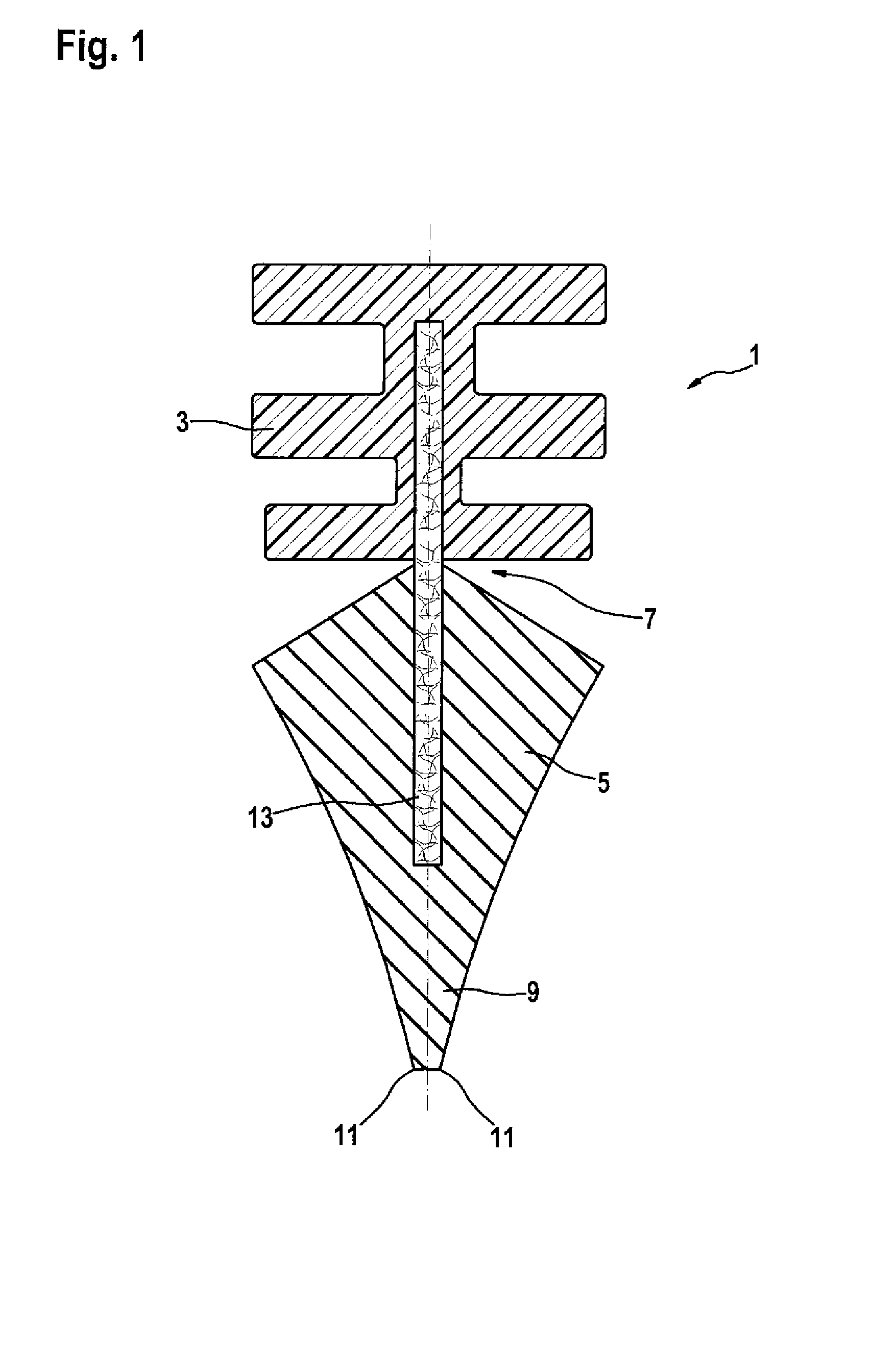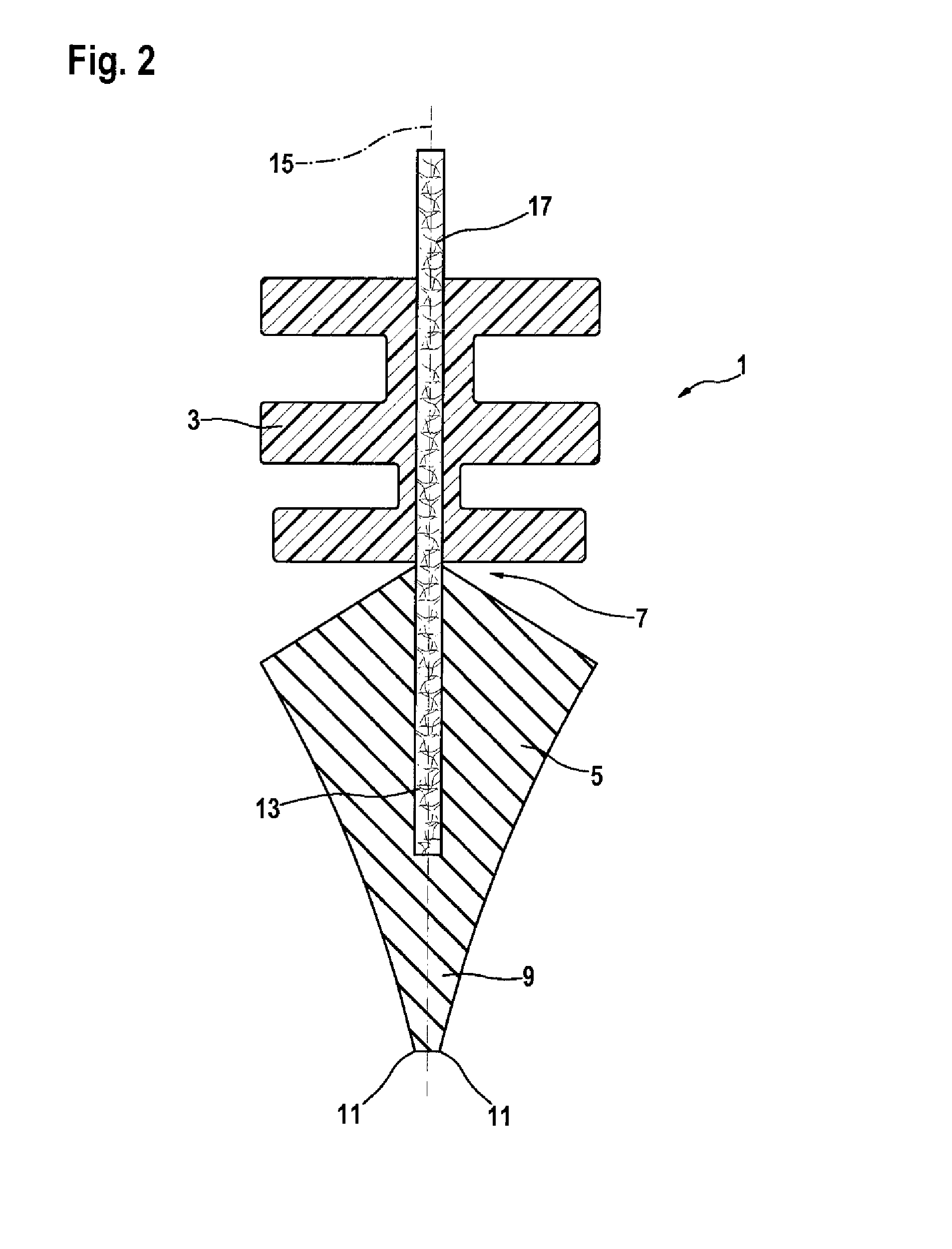Wiper blade for a window wiper and method for the production of said wiper blade
a technology for window wipers and wiper blades, which is applied in the direction of vehicle maintenance, vehicle cleaning, manufacturing tools, etc., can solve the problems of reducing the service life of the wiper blade. , to achieve the effect of reducing the wear of the wiper rubber, and ensuring the wiper blad
- Summary
- Abstract
- Description
- Claims
- Application Information
AI Technical Summary
Benefits of technology
Problems solved by technology
Method used
Image
Examples
Embodiment Construction
[0031]Represented in FIG. 1 is a section through a wiper blade with a fabric insert serving as a joint.
[0032]A wiping rubber 1 formed according to the invention comprises a base portion 3 and a lip portion 5. The base portion 3 and the lip portion 5 are connected to each other by way of a joint portion 7.
[0033]In the case of a window wiper for a motor vehicle, the lip portion 5 of the wiping rubber 1 has a wiping lip 9 with two opposing wiping edges 11. With the wiping edge 11, the wiping lip 9 sweeps over a window to be cleaned and in this way removes water, for example, from the window. Since, in the case of a window wiper, a positive wiping result must be achieved in both directions of movement of the wiping rubber 1, two wiping edges 11 are necessary. The lip portion 5 in each case flips over here in the region of the joint portion 7, so that the wiping rubber 1 in each case sweeps over the window with one of the wiping edges 11.
[0034]In the embodiment represented here, the lip ...
PUM
| Property | Measurement | Unit |
|---|---|---|
| elasticity | aaaaa | aaaaa |
| thickness | aaaaa | aaaaa |
| tensile strength | aaaaa | aaaaa |
Abstract
Description
Claims
Application Information
 Login to View More
Login to View More - R&D
- Intellectual Property
- Life Sciences
- Materials
- Tech Scout
- Unparalleled Data Quality
- Higher Quality Content
- 60% Fewer Hallucinations
Browse by: Latest US Patents, China's latest patents, Technical Efficacy Thesaurus, Application Domain, Technology Topic, Popular Technical Reports.
© 2025 PatSnap. All rights reserved.Legal|Privacy policy|Modern Slavery Act Transparency Statement|Sitemap|About US| Contact US: help@patsnap.com



